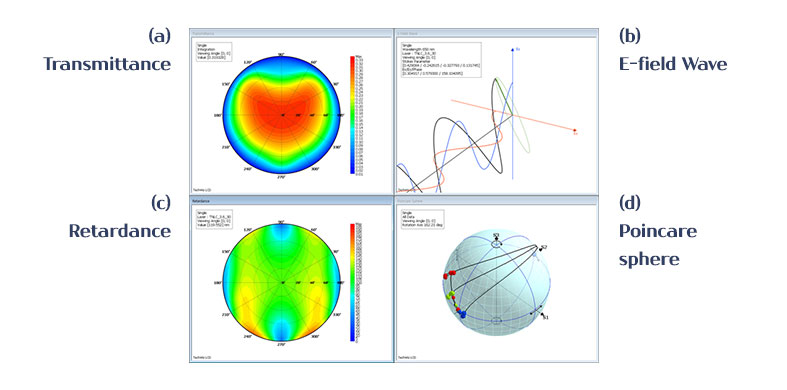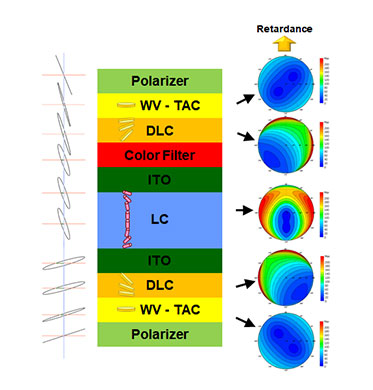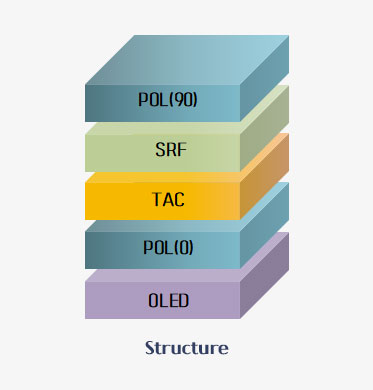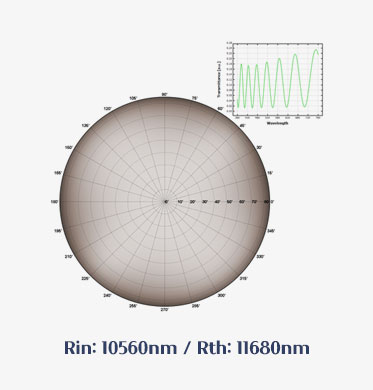Optical Film Design & Analysis
Polarization State Simulation
The LCD is composed of liquid crystals having an anisotropy of refractive indices between two polarizers to control the color and brightness. Polarization analysis is a key feature to analyze the characteristics of light for viewing angles. TechWiz Polar can be used to accurately analyze the polarization state of light by a polarizer and compensation film considering the optical anisotropy of liquid crystal molecules.
Optical Film Design
A polarizer is produced by dyeing a PVA(Poly Vinyl Alcohol) based film with a dichroic dye and then stretching it. After that, the TAC(Tri-Acetyl Cellulose) is attached to the top of the polarizer as a protection film. Although the PET(Polyethylene Terephthalate), substitute for TAC film, is cost-effective, it has serious optical problems such as color shift and high retardation property. To solve these issues, we offer the color analysis based on phase difference using TechWiz LCD 1D.
- #TechWiz LCD 1D
OLED Reflective Film Simulation
OLEDs have a much faster response time and a greater contrast ratio compared to LCDs, so OLEDs are widely used in smartphones, laptops, and TVs. In addition, OLEDs work without a backlight because it emits visible light in the EML(Emission Layer). However, reflective color issues by external light or sunshine are severe problems. To solve these issues, we provide optical analysis function for reflectance profile and color contour by the external light source.
SRF Simulation
A PET protective film found to be birefringent is attached to the outer layer of the LCD and OLED panels. Wearing sunglasses while watching the panel may induce rainbow-mura because of the phase difference from the display. To enhance visibility and minimize rainbow-mura, an anti-scattering film such as SRF(Super Retardation Film) should be used. Color analysis by Rin, Rth is provided through TechWiz LCD 1D.









